Starting an online business is easier than ever. You don’t need a warehouse, bulk stock, or a huge budget to get going.
Two of the most popular ways to sell online without holding inventory are Print on Demand (POD) and Dropshipping. Both can help you launch a store quickly, but they work in different ways.
If you’re kicking off your business journey in 2025, you’ll want to start on the right foot. Understanding how these two models work will help you avoid costly mistakes and set you up for success.
Let’s walk through them so you can pick the one that truly matches your vision.
What is Print on Demand?
Print on Demand, or POD, is like having your own factory without actually owning one. You create designs, for example, a witty quote, a cool graphic, or even a hand-drawn sketch, and your POD partner prints that design on products only when someone orders them.
Let’s say you design a funny coffee mug. You list it in your online store.
When a customer buys it, the POD service prints your design on the mug, packs it, and ships it directly to the buyer. You never have to touch the product or store it in your room.
The beauty of POD is that you can sell almost anything with your design on it. T-shirts, tote bags, hoodies, phone cases, posters – you name it. And since products are made after the order comes in, you don’t need to buy in bulk or worry about unsold stock.
It’s a great option if you’re creative, want to build a niche brand, or love the idea of selling unique items that customers can’t find anywhere else.
What is Dropshipping?
Dropshipping is like running a shop without keeping anything in stock. Instead of buying products upfront, you partner with suppliers who already have them ready to ship.
Here’s how it works.
You choose products you want to sell, maybe it’s kitchen gadgets, fitness gear, or trendy sunglasses, and list them in your online store. When a customer places an order, you forward it to your supplier. They handle the packaging and shipping straight to the customer.
You don’t need a warehouse, and you don’t have to worry about storing or managing inventory. Your main job is to run the store, choose the right products, and handle customer service.
Dropshipping gives you access to a wide range of items, so you can test different products without a big investment. But since other sellers can offer the same items, you’ll need to work on your pricing, branding, and marketing to stand out.
Print on Demand vs Dropshipping – Key Differences at a Glance
| Feature | Print on Demand (POD) | Dropshipping |
|---|---|---|
| Product Type | Custom-designed items like t-shirts, mugs, phone cases, posters | Pre-made products from suppliers (gadgets, clothing, home goods, etc.) |
| Customization | Fully customizable with your own designs | Usually no customization; you sell what the supplier offers |
| Inventory | No need to stock products; items are made after an order is placed | No need to stock products; suppliers keep ready inventory |
| Startup Cost | Very low — only pay when an order comes in | Very low — only pay when an order comes in |
| Fulfillment Time | Longer (products are made after purchase) | Usually faster (products are ready to ship) |
| Profit Margin | Lower due to custom production costs | Can be higher, but depends on competition |
| Product Range | Limited to what the POD service offers | Much wider range of products |
| Branding Potential | Strong — unique designs help build a niche brand | Weaker unless you focus on strong marketing and customer experience |
| Risk of Unsold Stock | None | None |
| Best For | Creative sellers and niche markets | Sellers who want to test multiple products quickly |
Breaking Down the Main Differences Between POD and Dropshipping
While both Print on Demand and Dropshipping let you run an online store without keeping inventory, they work in different ways. The choice between them often comes down to your goals, your target audience, and how much control you want over your products.
Here are the main factors that set them apart:
Each of these areas plays a big role in how your business will run. Let’s look at them one by one.
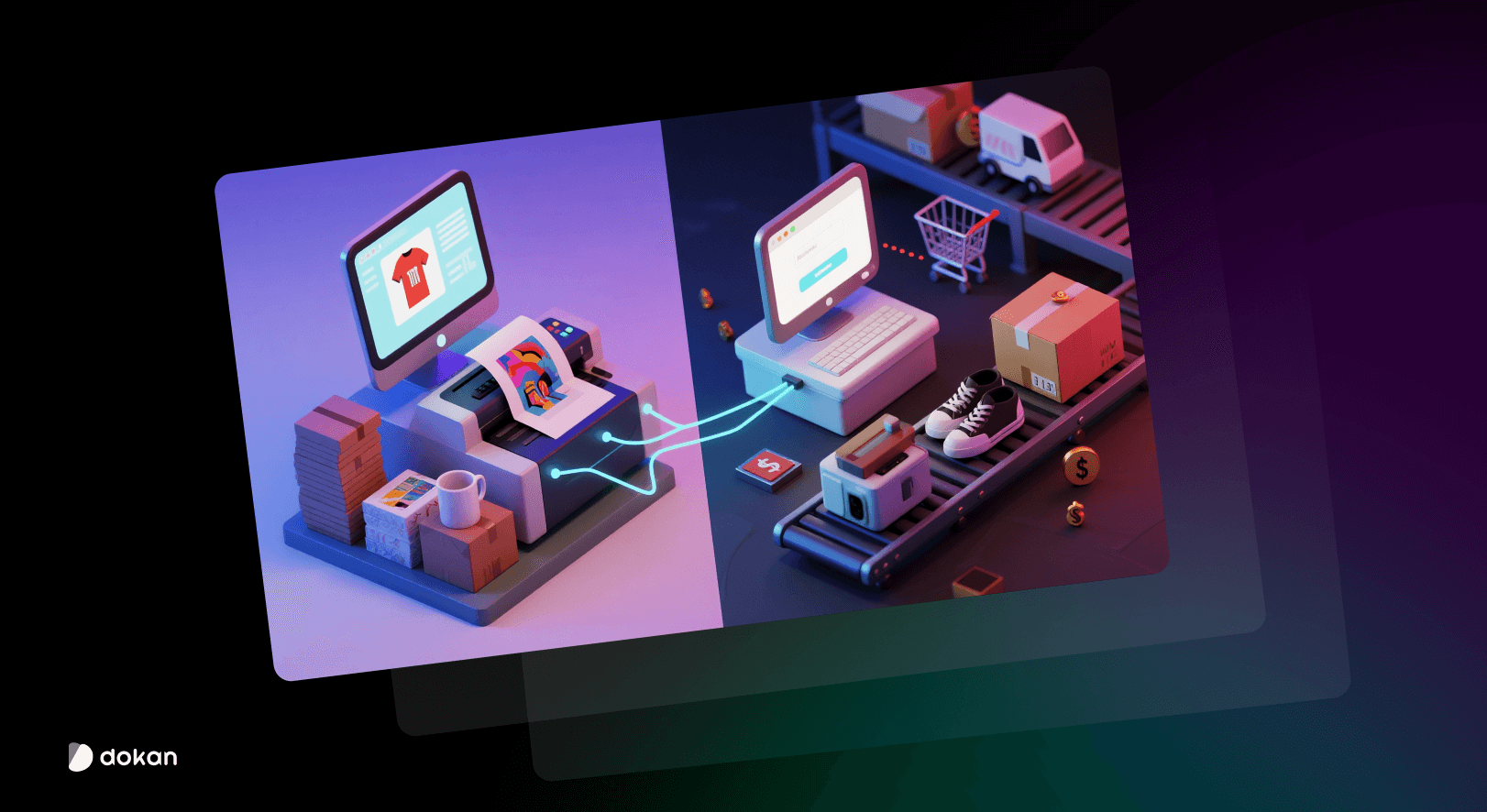
I. Product Customization
This is where Print on Demand really shines. With POD, you can put your own designs, logos, or slogans on products. Every order is unique because it’s made after a customer buys it. That means you can sell truly one-of-a-kind items that reflect your brand’s style.
Dropshipping, on the other hand, is usually about selling ready-made products from suppliers. You can’t change the design or add your own branding to most of them. Your customization options are limited to things like product descriptions, packaging (if the supplier allows it), and how you market the items.
If you’re building a brand around creativity or originality, POD is the winner here. If you care more about selling trending or mass-appeal products quickly, Dropshipping may fit better.
II. Inventory Handling
Neither Print on Demand nor Dropshipping requires you to stock products yourself.
With POD, products are only made after someone places an order. So, you don’t have to worry about buying in bulk or storing unsold items. This means zero risk of leftover stock sitting around.
Dropshipping works similarly. Your suppliers keep all the products in their warehouses. When a customer buys from your store, the supplier ships it directly. You don’t need to handle or store anything.
Both models free you from the hassle and cost of managing inventory.
III. Shipping and Delivery Times
Shipping speed can vary quite a bit between these two models.
Print on Demand products are made only after someone orders. That means there’s extra time needed for production before shipping even starts. Because of this, delivery can take longer, usually a few extra days, compared to regular products.
Dropshipping often has faster shipping because the products are already made and stored by suppliers. Once you get an order, the supplier can ship it out quickly. However, shipping times depend on where the supplier is located and what shipping options they offer.
If you want to offer fast delivery, dropshipping might have the edge. But if you focus on unique, custom items, a little extra wait is often worth it.
IV. Startup Costs
Both Print on Demand and Dropshipping keep startup costs low compared to traditional stores.
With POD, you don’t need to buy products upfront. You only pay for the item after a customer places an order. This means almost no money is tied up before you start selling.
Dropshipping works the same way. You don’t buy inventory in advance. Instead, you pay the supplier after a sale happens.
However, keep in mind you might spend on other things like marketing, website setup, or premium tools. But when it comes to the products themselves, both models let you start with very little cash.
V. Profit Margins
Profit margins can vary quite a bit between Print on Demand and Dropshipping.
With POD, your costs are higher because each item is made individually with your custom design. That usually means lower profit per sale. But unique products can allow you to charge more if your brand connects with customers.
Dropshipping products often come from suppliers offering bulk prices. That can give you better margins if you find the right products and price them well. But competition is tougher, so you might have to lower prices to stay competitive.
In short, POD gives you more control over branding but smaller margins. Dropshipping can offer higher margins but needs smart product and price choices to make a good profit.
VI. Scalability
Both models can grow with your business, but they do it differently.
Print on Demand lets you scale by adding more designs and products without worrying about stock or shipping. However, since each product is made on demand, your production speed depends on your POD provider. If they get overwhelmed, orders might slow down.
Dropshipping lets you scale by expanding your product range quickly. You can add lots of new items without extra inventory costs. But managing many suppliers and orders can get tricky as your store grows. Plus, you rely on suppliers’ stock and shipping reliability.
If you want steady growth with a creative edge, POD works well. If you want to test many products and scale fast, dropshipping might suit you better.
Pros and Cons of Print on Demand
Print on Demand has some big advantages, especially if you like creativity and low risk. But it also comes with a few downsides to keep in mind.
Pros
Cons
Pros and Cons of Dropshipping
Dropshipping is popular for its ease and flexibility, but it also has its challenges.
Pros
Cons
Print on Demand vs Dropshipping – Which One Should You Start?
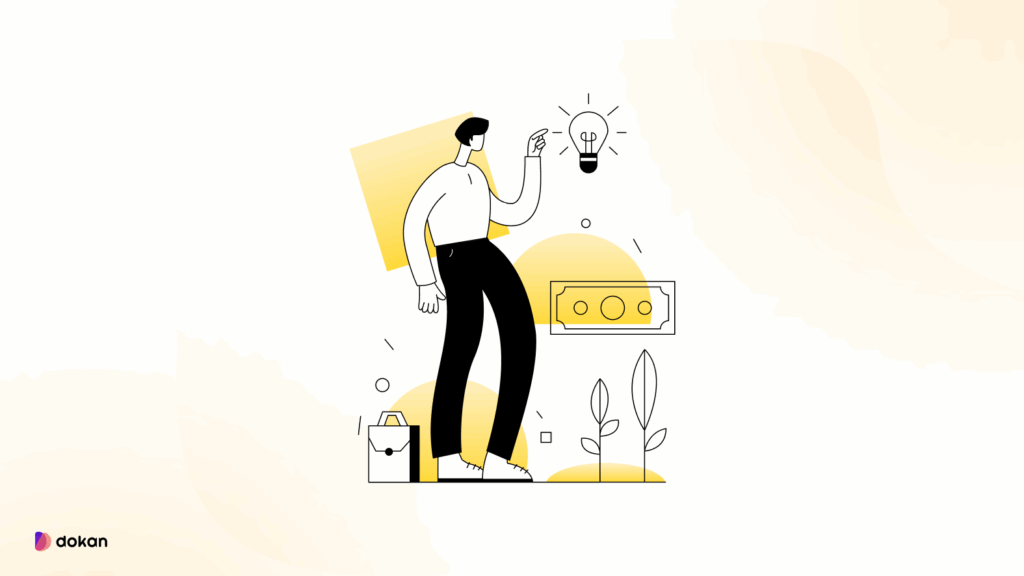
Choosing between Print on Demand and Dropshipping comes down to what fits your style, goals, and how you want to run your business. Here’s a simple guide to help you decide:
Start with Print on Demand if…
- You love creating unique designs and want to build a brand that feels personal.
- You want to sell products that customers can’t find anywhere else.
- You don’t mind a bit of extra wait time for orders to be made and shipped.
- You prefer to keep things simple with fewer product options but more control over style.
We have a series of blog posts on starting a print on demand business. Check them out to learn everything about it!
- How to Start a Print on Demand Business: A Step-by-Step Guide
- Print On Demand Marketplace: Everything You Need to Know
- How to Build Print on Demand Marketplace Using Dokan
Start with Dropshipping if…
- You want to offer a wide variety of products without designing anything yourself.
- You like the idea of testing lots of different products quickly to find what sells best.
- Fast shipping is important to you and your customers.
- You’re okay with competing on price and marketing since many sellers may offer the same items.
Can You Mix Both?
Yes! You don’t have to pick just one. Some sellers combine POD and dropshipping in the same store. That way, you get the best of both worlds – unique products alongside popular ready-made items.
The key is to think about what excites you and what your customers will want. Starting small and learning as you go always works better than trying to do everything at once.
Ready to Start Your Online Store?
Print on Demand and Dropshipping both offer simple ways to start selling without upfront inventory. Your best choice depends on what fits your style and goals.
If you want creative control and unique products, Print on Demand is a solid pick. If you want to offer lots of products quickly, dropshipping might work better.
Take time to weigh the pros and cons. Pick the model that feels right, start small, and grow with experience. Your online store journey starts with one step – make that step count.
Subscribe to
Dokan blog
We send weekly newsletters, no spam for sure!

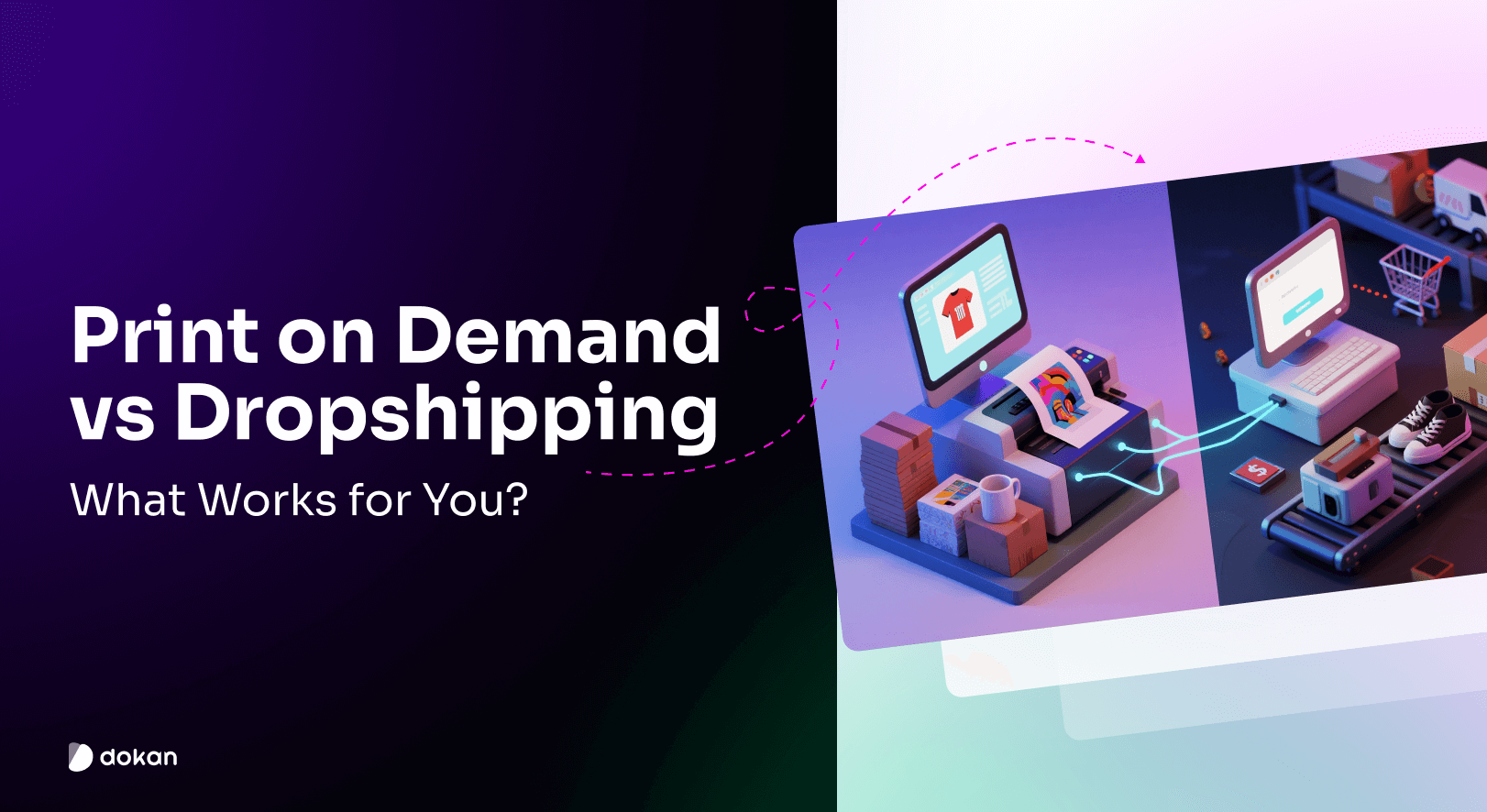

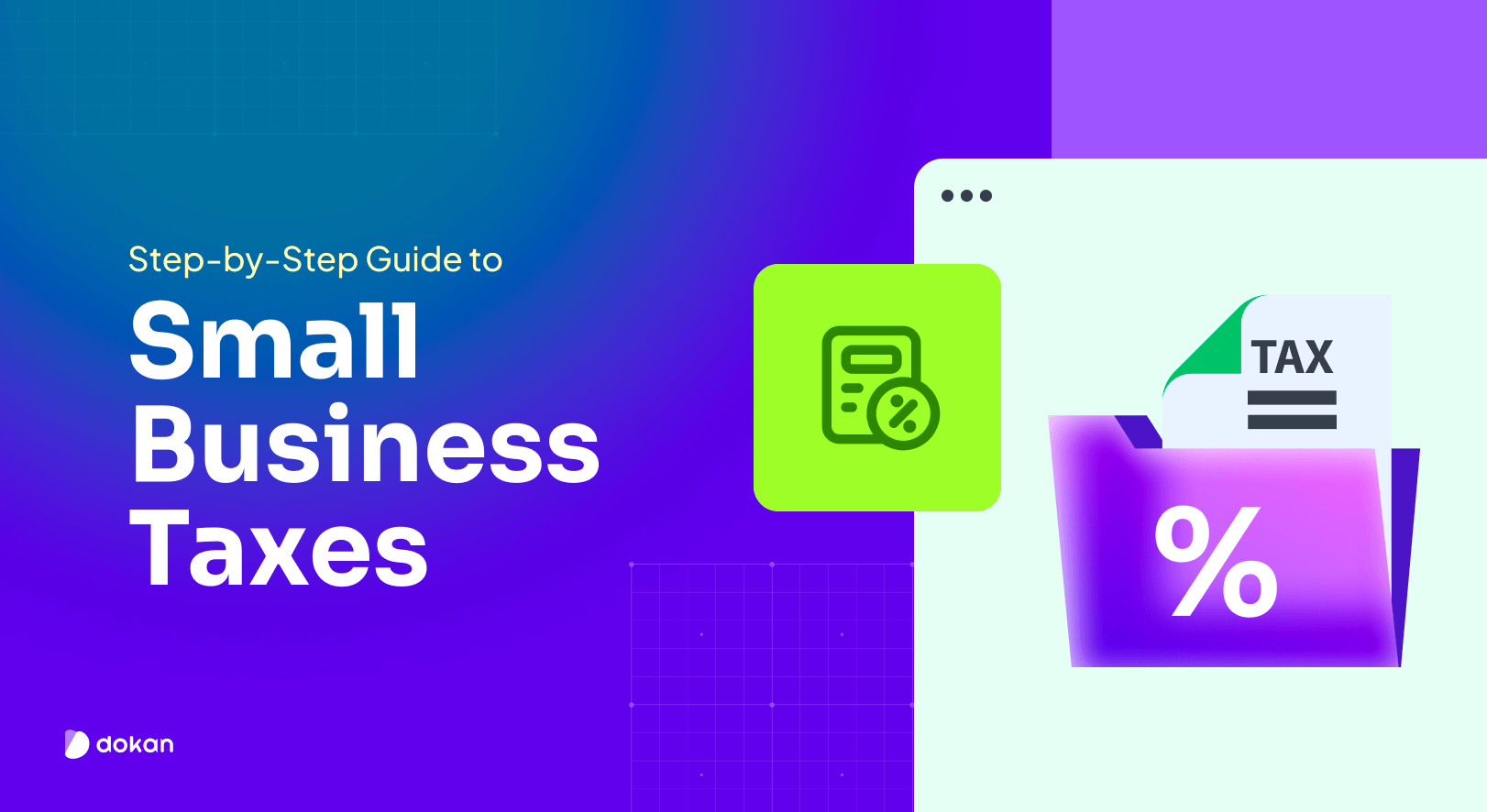
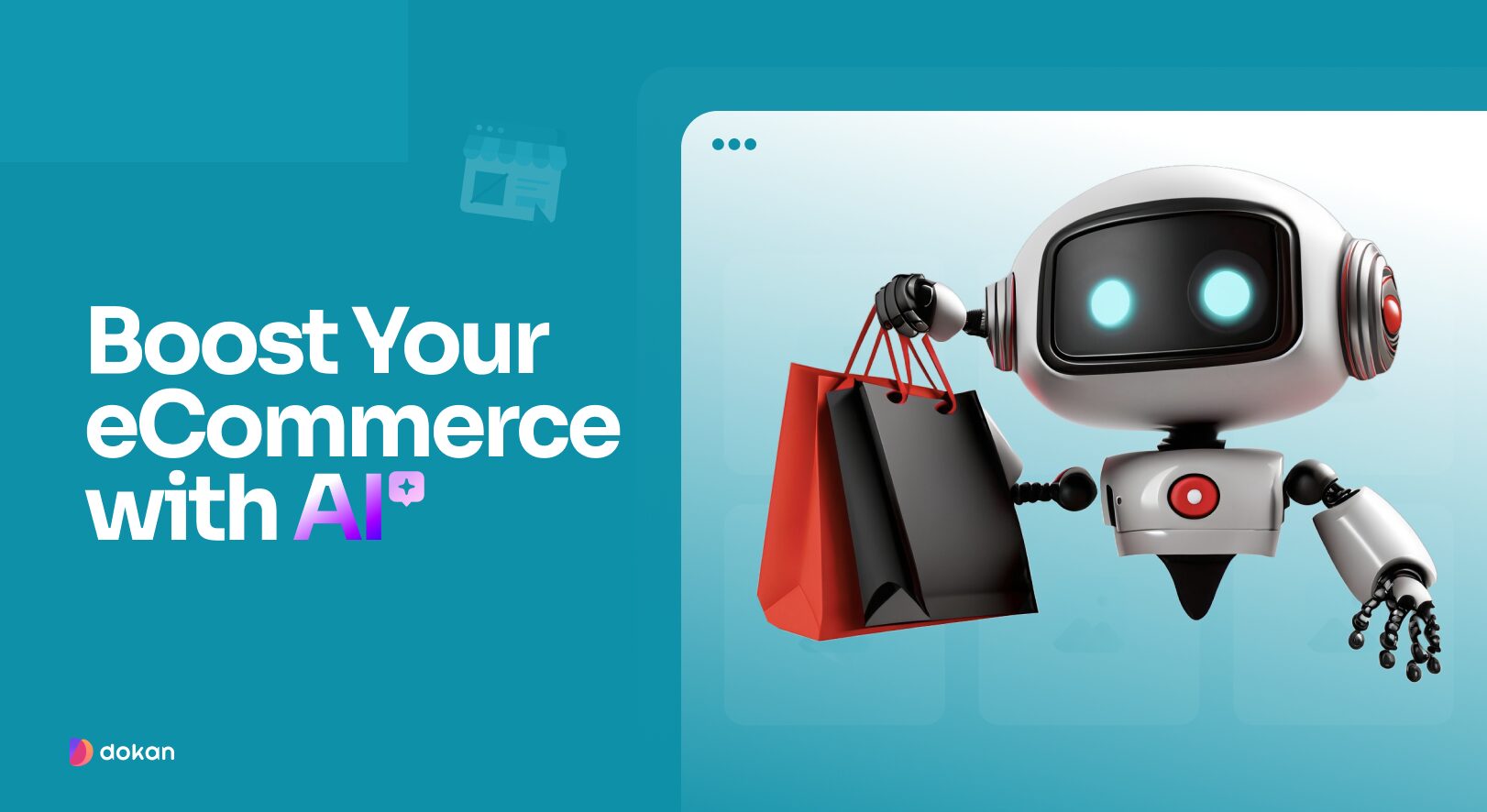
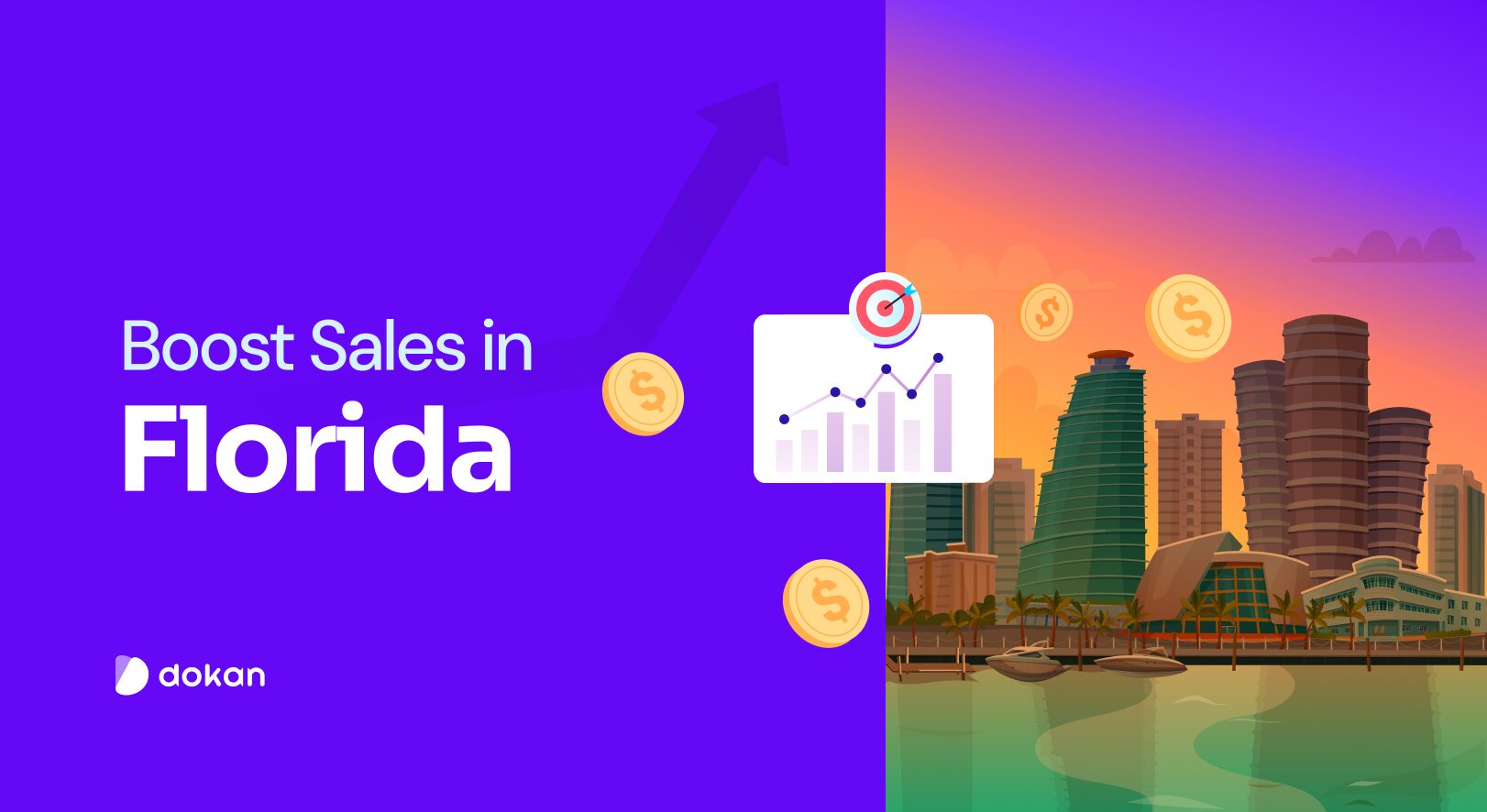

Leave a Reply